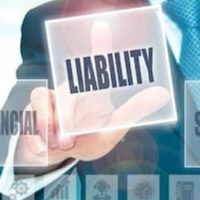Proving Foreseeability in a Premises Liability Claim

There’s a lot of Legalese in that title, so let’s break it down. “Proving” means establishing a fact by a preponderance of the evidence (more likely than not). Victims don’t need to conclusively prove anything in civil court. “Foreseeability” of injury is the possibility of injury. An explosion aboard a spaceship bound for the moon is a foreseeable, although not likely, occurrence. “Premises liability” includes sip-and-fall injuries, swimming pool drownings, dog bites, and most importantly for purposes of this post, third-party assaults.
Once upon a time, property owners were never responsible for injuries caused by a third-party crime. This act wasn’t likely. Now, the standard is foreseeability, which is a lower standard. Therefore, a Seattle assault lawyer has an excellent opportunity to obtain compensation for economic losses, such as medical bills, and noneconomic losses, such as pain and suffering. If a lawyer thoroughly prepares a case, it will most likely settle out of court, and on victim-friendly terms.
Prior Similar On-Property Incidents
The previous incident need not be exactly similar or immediately prior to the incident in the claim. The standard is only foreseeability.
An incident that occurred a few weeks ago almost certainly satisfies the foreseeability requirement. A few months ago is probably in a gray area. An incident several years old might not satisfy this requirement, especially if ownership has changed.
For foreseeability purpose, a non-injury pushing and shoving match is similar to a serious injury assault. A loud argument is probably similar to an assault as well.
The constructive knowledge (should have known) rule usually doesn’t apply to foreseeability matters. In most cases, a Seattle personal injury lawyer must prove actual knowledge, once again by a preponderance of the evidence.
Type of Business
Assault injuries are almost automatically foreseeable at businesses that serve alcohol. Violent incidents, even something like a violent argument, are extremely common at such businesses.
These injuries are probably foreseeable at a hotel, apartment complex, or other such businesses that have significant foot traffic and large parking lots. An assault is almost definitely not foreseeable at a flower shop, unless one of the other factors applies.
Prior Similar Nearby Incidents
The same analysis discussed above usually applies on this point. A nearby business usually includes a business in the same ZIP code.
Location of Business
This factor goes back to foot traffic. Assaults are more likely at businesses located near highways or busy intersections than businesses located on cul-de-sacs.
Area’s Crime Rate
Once again, there’s no hard and fast rule in this area. The “area” could mean the neighborhood, the ZIP code, or the city.
Usually, the crime rate must be noticeably higher in the given area. Upward and downward trends are relevant as well.
Other elements of a premises liability claim include duty of care and knowledge of hazard. The duty of care is usually a duty of reasonable care. Hazards include burned-out light, broken cameras, and nonfunctioning gates.
Connect With a Hard-Hitting King County Lawyer
Property owners are usually responsible for guest safety. For a free consultation with an experienced personal injury lawyer in Seattle, contact the Emerald Law Group. We do not charge upfront legal fees in these matters.
Source:
nycourts.gov/reporter/archives/palsgraf_lirr.htm
